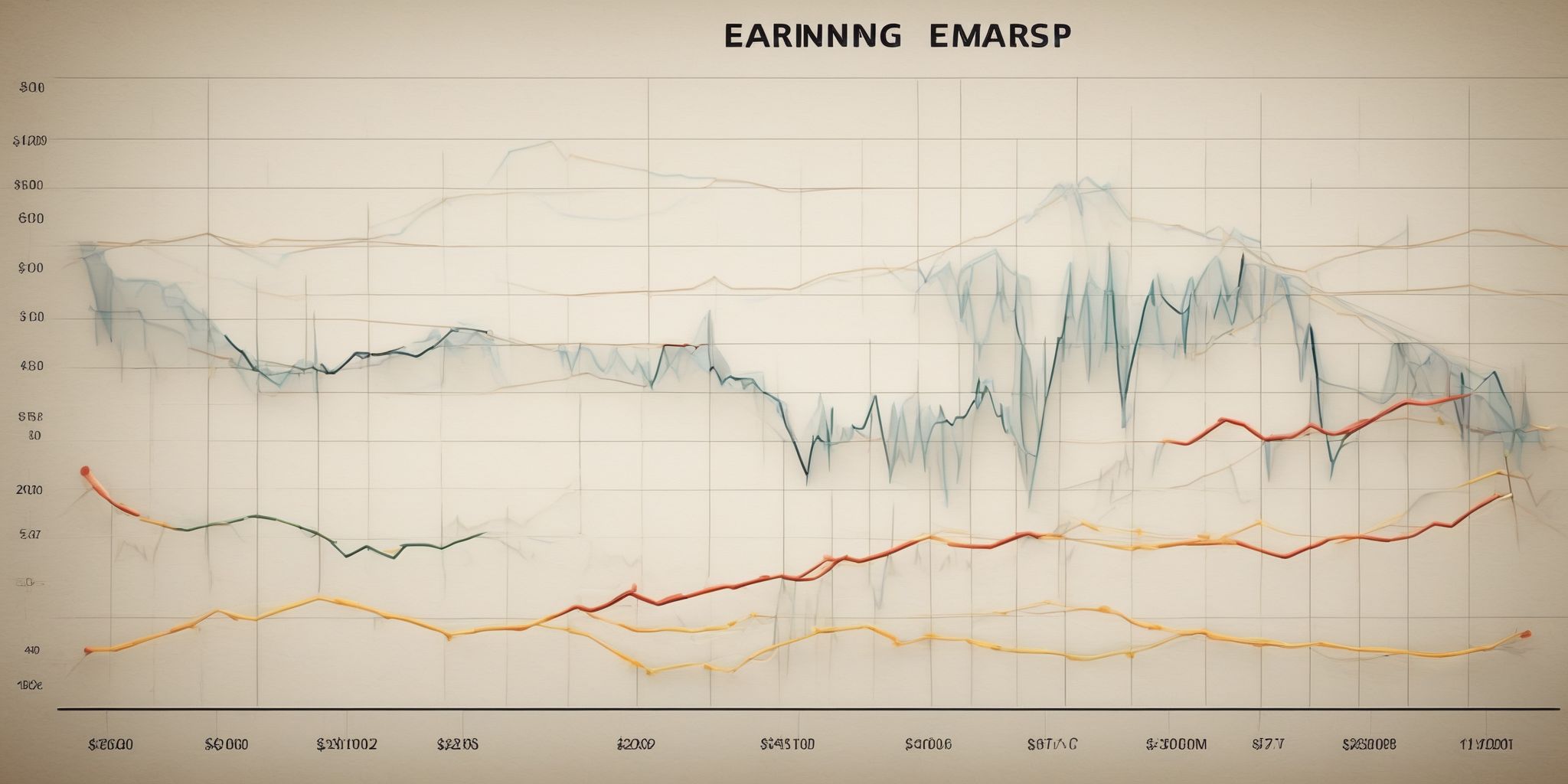The Fantastic Benefits of a Roth IRA: Why You Should Start Today!
Hey there! Let's talk about money, shall we? We all want financial security, a nest egg that grows while we sleep, right? Well, imagine if I told you there's a magical account that not only helps you save for retirement but also grants you tax-free withdrawals in the future. Sounds too good to be true, doesn't it? Nope, it's called a Roth IRA, and boy, does it come with some fantastic benefits.
If your interest is piqued, then buckle up, because we're about to dive into the world of Roth IRAs and discover why you should seriously consider starting one today. Trust me, your future self will thank you!
Understanding Roth IRAs
What is a Roth IRA?
A Roth IRA is a retirement savings account that offers unique benefits. Unlike traditional IRAs, contributions to a Roth IRA are made with after-tax money. This means that when you retire and start withdrawing from your Roth IRA, those withdrawals are tax-free. This can result in significant savings over time compared to taxable investment accounts. With a Roth IRA, you have the flexibility to contribute up to certain limits based on your income level.
Additionally, Roth IRAs do not have required minimum distributions, allowing you to let your investments grow for as long as you want.
How does a Roth IRA work?
A Roth IRA is a retirement account that offers significant benefits. Contributions to a Roth IRA are made with after-tax money, meaning you've already paid taxes on the funds. The money in a Roth IRA grows tax-free over time, and when you withdraw funds in retirement, they are typically tax-free as well. This allows for potentially substantial tax savings in the long run.
Unlike traditional IRAs, Roth IRAs have no required minimum distributions, so you can keep your money growing for as long asyou want.
Contributions and Withdrawals
Contributions to a Roth IRA are made with after-tax dollars, which means that you don't get an immediate tax deduction. However, this pays off later when you make tax-free withdrawals during retirement. You can contribute up to a certain limit each year, depending on your income level and age. The benefit of a Roth IRA is that you have flexibility in making withdrawals. You can withdraw your contributions at any time without penalties or taxes since you've already paid taxes on them.
Additionally, after the age of 59½, you can withdraw both contributions and earnings tax-free as long as your account has been open for at least five years. This flexibility gives you control over your retirement funds, allowing you to access money if needed while still enjoying tax benefits.
The Fantastic Benefits of a Roth IRA
Tax-Free Growth
- One of the significant benefits of a Roth IRA is tax-free growth on your investments.
- Unlike traditional retirement accounts, such as 401(k)s, where you'll be taxed on your withdrawals during retirement, a Roth IRA allows your investments to grow tax-free.
- All the income, dividends, and capital gains generated within your Roth IRA are shielded from taxes as long as you meet the required conditions.
- This means that your investments have the potential to compound over time without being diminished by taxes, allowing you to maximize your savings.
- Whether it's through stocks, bonds, or mutual funds, the tax-free growth in a Roth IRA can significantly boost your long-term retirement savings.
Tax-Free Withdrawals
One of the primary benefits of a Roth IRA is the ability to make tax-free withdrawals in retirement. Unlike traditional IRAs, which are subject to income tax upon withdrawal, qualified Roth IRA withdrawals are completely tax-free. This means that the money you contribute to your Roth IRA, as well as the earnings it generates over time, can be withdrawn without incurring any tax obligations. For example, if you contribute $5,000 annually for 30 years and your investments grow to $500,000, you can withdraw the entire $500,000 tax-free. This provides retirees with significant financial flexibility and can potentially result in substantial savings over the long term.
Flexibility in Contributions
One of the key benefits of a Roth IRA is the flexibility it offers regarding contributions. Unlike traditional IRAs, there are no age limits for making contributions to a Roth IRA as long as you have earned income. Whether you're just starting your career or nearing retirement, you can continue to contribute to your Roth IRA.
Additionally, you can contribute up to the annual limit set by the IRS, and you have the freedom to choose when and how much you contribute each year. This flexibility allows you to adjust your savings strategy based on your financial situation and long-term goals.
For example, if you receive a bonus or unexpected windfall, you can choose to contribute a higher amount to your Roth IRA, maximizing the benefits of tax-free growth.
No Required Minimum Distributions
No Required Minimum Distributions: One of the fantastic benefits of a Roth IRA is that it doesn't require you to take any minimum distributions during your lifetime. Unlike traditional retirement accounts, which mandate withdrawals at a certain age, the Roth IRA allows your investments to grow tax-free without any pressure to cash out.
This flexibility gives you the freedom to decide when and how you want to use your funds, whether it's for retirement, leaving a legacy for your heirs, or even transforming your Roth IRA into a generational wealth-building tool. You have the power to choose your own path without forced distributions hanging over your head.
Estate Planning Benefits
Estate planning is an often overlooked, yet valuable, benefit of a Roth IRA. By designating beneficiaries, you can ensure a seamless transfer of your assets upon your passing. Unlike traditional IRAs, Roth IRAs do not have required minimum distributions (RMDs), allowing your funds to continue growing tax-free throughout your lifetime. In the event of your death, your beneficiaries can inherit the Roth IRA tax-free and can even continue its growth over their lifetime.
This can provide a significant advantage in estate planning and leave a lasting financial legacy for your loved ones. So, when considering the benefits of a Roth IRA, don't forget about its potential for efficient estate transfer.
Getting Started with a Roth IRA
Eligibility and Contribution Limits
To take advantage of the Roth IRA benefits, it's crucial to understand the eligibility criteria and contribution limits. Generally, anyone with earned income can contribute to a Roth IRA, regardless of age. The maximum annual contribution limit for 2021 is $6,000 (or $7,000 for individuals aged 50 and above). However, income limits exist, affecting the ability to contribute directly.
For example, if you're a single filer and your modified adjusted gross income exceeds a certain threshold, your contribution limit may be reduced or eliminated. It's essential to review the IRS guidelines and consult a financial advisor to ensure compliance with eligibility requirements and contribution limits.
Choosing the Right Roth IRA Provider
Choosing the right Roth IRA provider is an important decision on your path to maximizing the benefits of this retirement account. Look for providers that offer low fees and a wide range of investment options to suit your risk tolerance and goals.
Additionally, consider factors such as customer service quality, user-friendly online platforms, and educational resources that can help you make informed investment decisions. It's also advisable to check if the provider has a good track record and positive reviews from other customers. Research and compare different Roth IRA providers to find the one that aligns with your needs and preferences.
Opening and Funding Your Roth IRA
Opening and funding your Roth IRA is the first step towards reaping its benefits. Start by researching reputable providers that offer Roth IRAs with low fees and a wide range of investment options. Once you've chosen a provider, you'll need to complete their account opening process, which typically involves providing personal information and selecting the type of Roth IRA you want.
To fund your Roth IRA, consider setting up automatic contributions from your bank account on a monthly basis. This ensures a consistent flow of funds and takes advantage of dollar-cost averaging. Remember, the maximum annual contribution for 2021 is $6,000 (or $7,000 if you're 50 or older), so aim to maximize your contributions over time. By regularly funding your Roth IRA, you'll be on track to achieving long-term financial security and enjoying the tax advantages it offers.
Investing Strategies for Your Roth IRA
When it comes to maximizing the benefits of your Roth IRA, choosing the right investment strategy is crucial. A diversified portfolio is often recommended to balance risk and potential returns. Consider investing in a mix of stocks, bonds, and mutual funds according to your risk tolerance and long-term goals. Dollar-cost averaging can be an effective strategy, investing a fixed amount regularly to buy more shares when prices are low and fewer when prices are high.
Additionally, regularly rebalancing your portfolio helps maintain the desired asset allocation. Remember, the key is to have a strategy that aligns with your time horizon and risk appetite, ensuring the growth potential of your Roth IRA.
Example 1: How Sarah Maximized Her Savings with a Roth IRA
Sarah, a diligent saver, maximized her savings by taking advantage of the incredible benefits offered by a Roth IRA. By making regular contributions to her Roth IRA, she enjoyed tax-free growth on her investments.
As a result, the earnings from her investments accumulated over time and grew substantially. When Sarah reached retirement age, she was able to withdraw her funds tax-free, providing her with a significant source of income during her golden years. Sarah's foresight in utilizing a Roth IRA allowed her to optimize her savings by minimizing tax liabilities and securing her financial future. Start your own Roth IRA today and reap the benefits just like Sarah.
Example 2: John's Tax-Free Retirement Income Thanks to his Roth IRA
John, a diligent saver, contributed regularly to his Roth IRA throughout his working years. Now in retirement, he enjoys the incredible benefit of tax-free withdrawals from his account. By making contributions with after-tax dollars, John already paid taxes on the money he invested. As a result, he can withdraw his contributions and any earnings tax-free during retirement. This means that John can enjoy a steady stream of income without having to worry about tax obligations. With careful planning and disciplined saving, John's Roth IRA has provided him with a reliable source of tax-free retirement income.
Conclusion
A Roth IRA offers numerous benefits, making it an attractive option for individuals to start investing today. It provides tax-free growth and withdrawals during retirement, allowing individuals to potentially save substantial amounts of money.
Additionally, contributions to a Roth IRA are made with after-tax dollars, meaning that withdrawals in retirement are not subject to income tax. This flexibility allows individuals to effectively manage their taxes in retirement. Furthermore, a Roth IRA does not have required minimum distributions, giving individuals the freedom to leave their money invested for as long as they wish.


